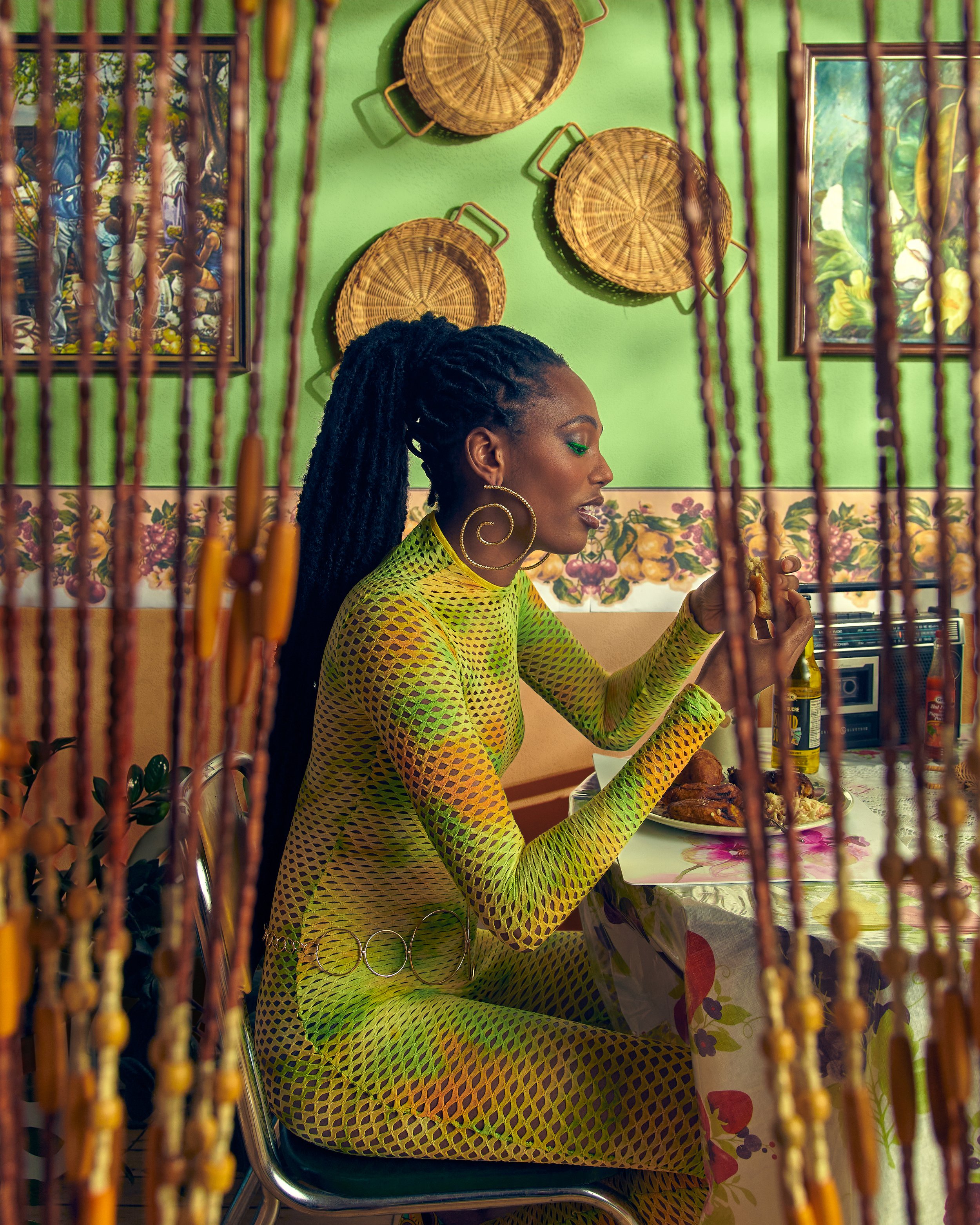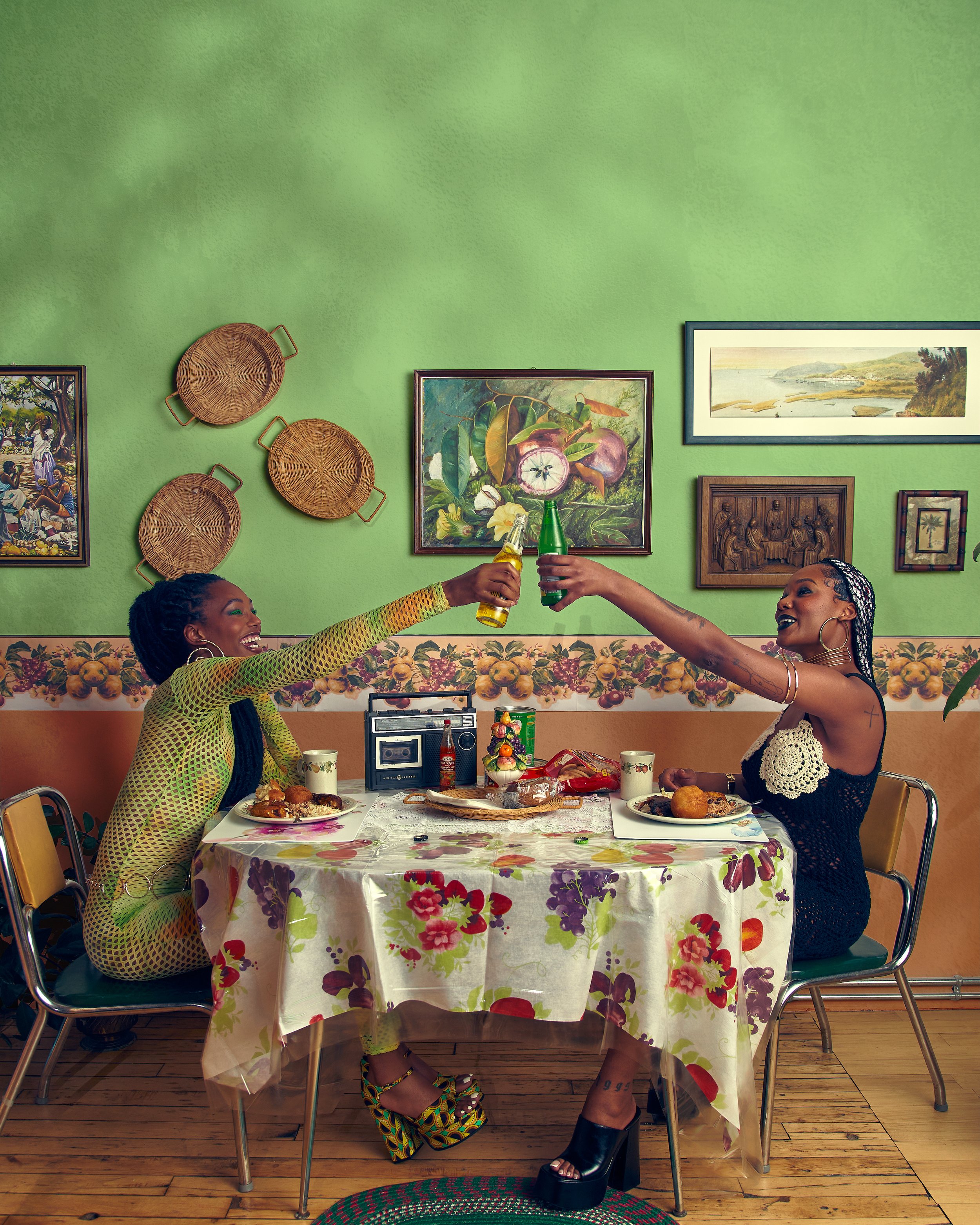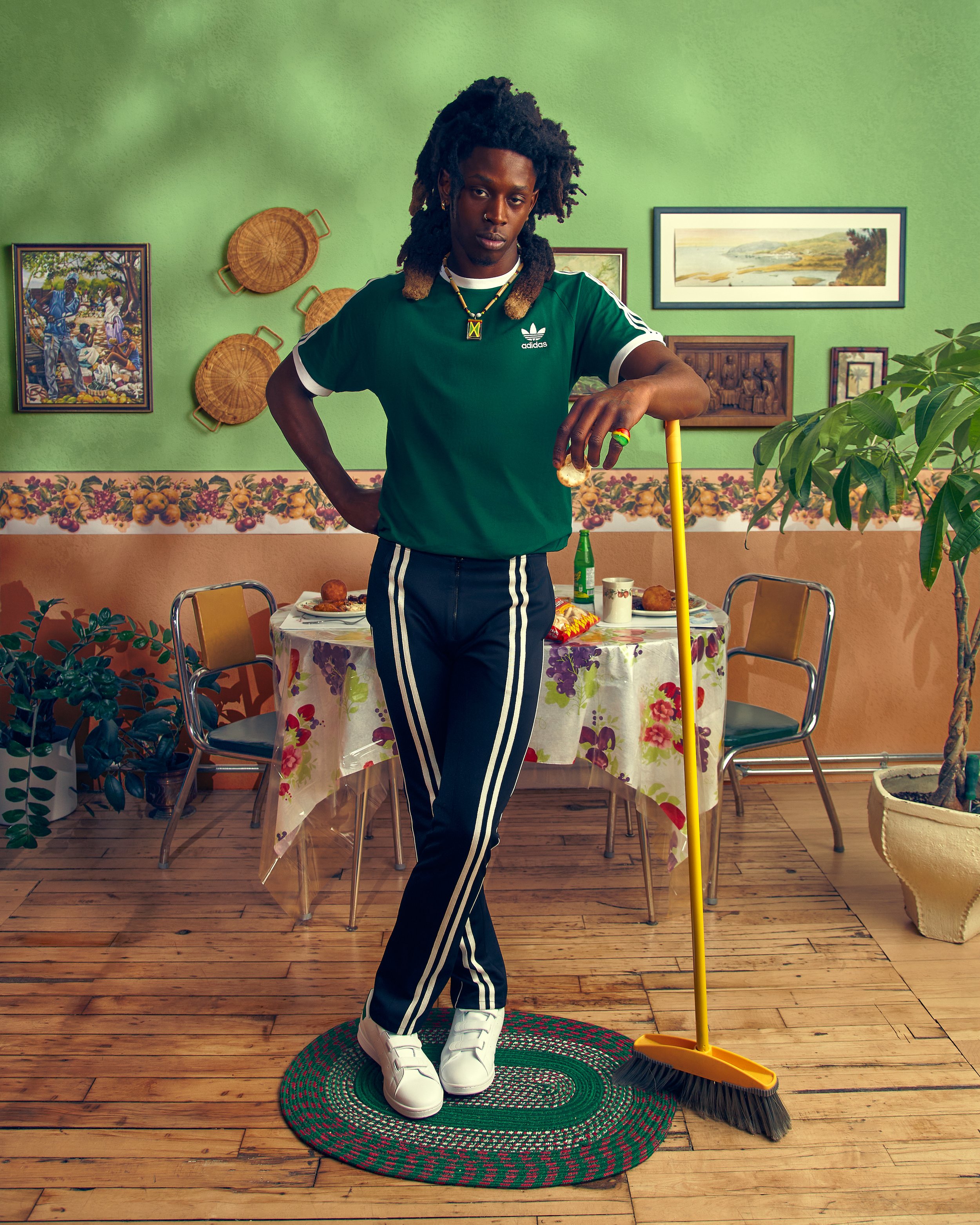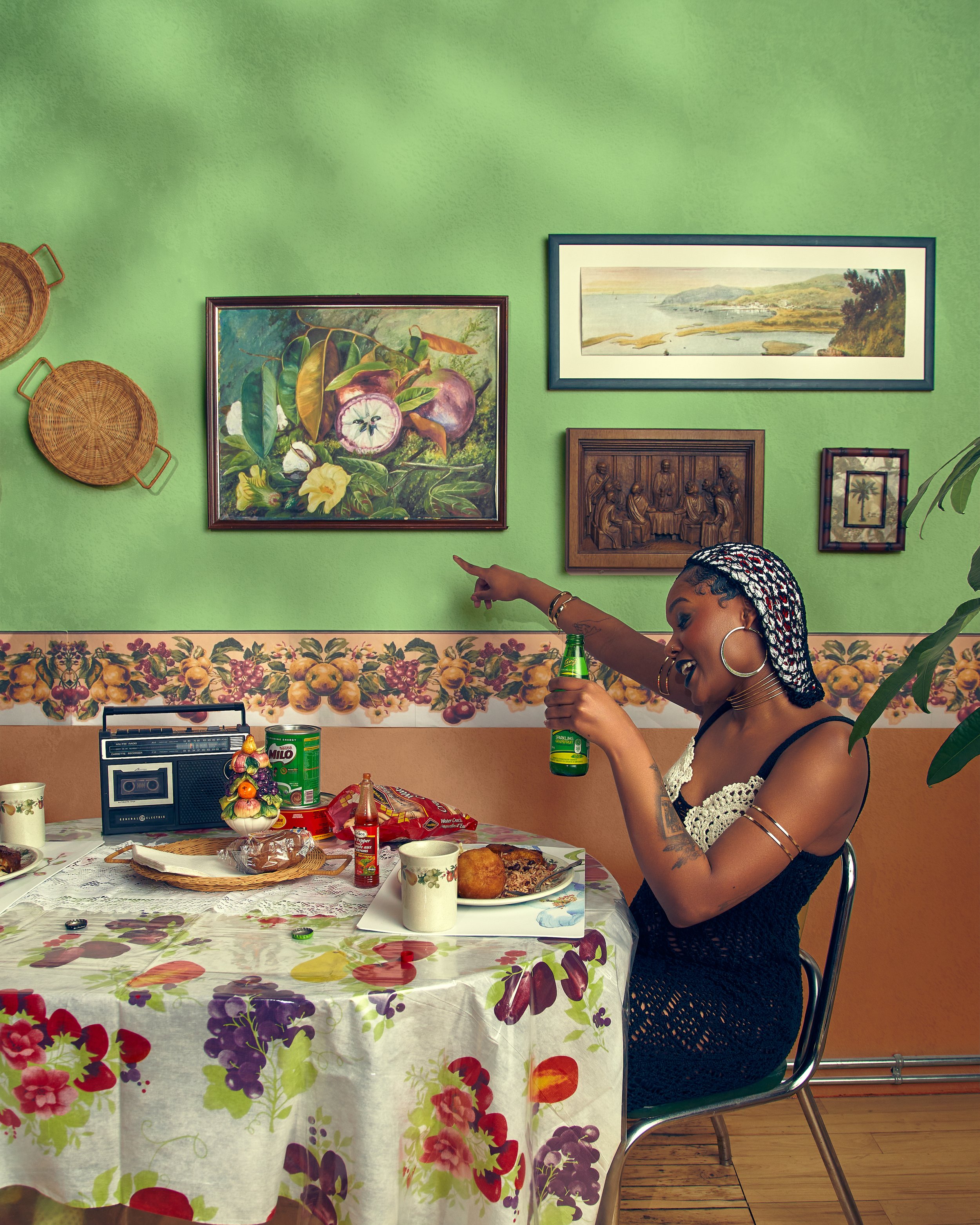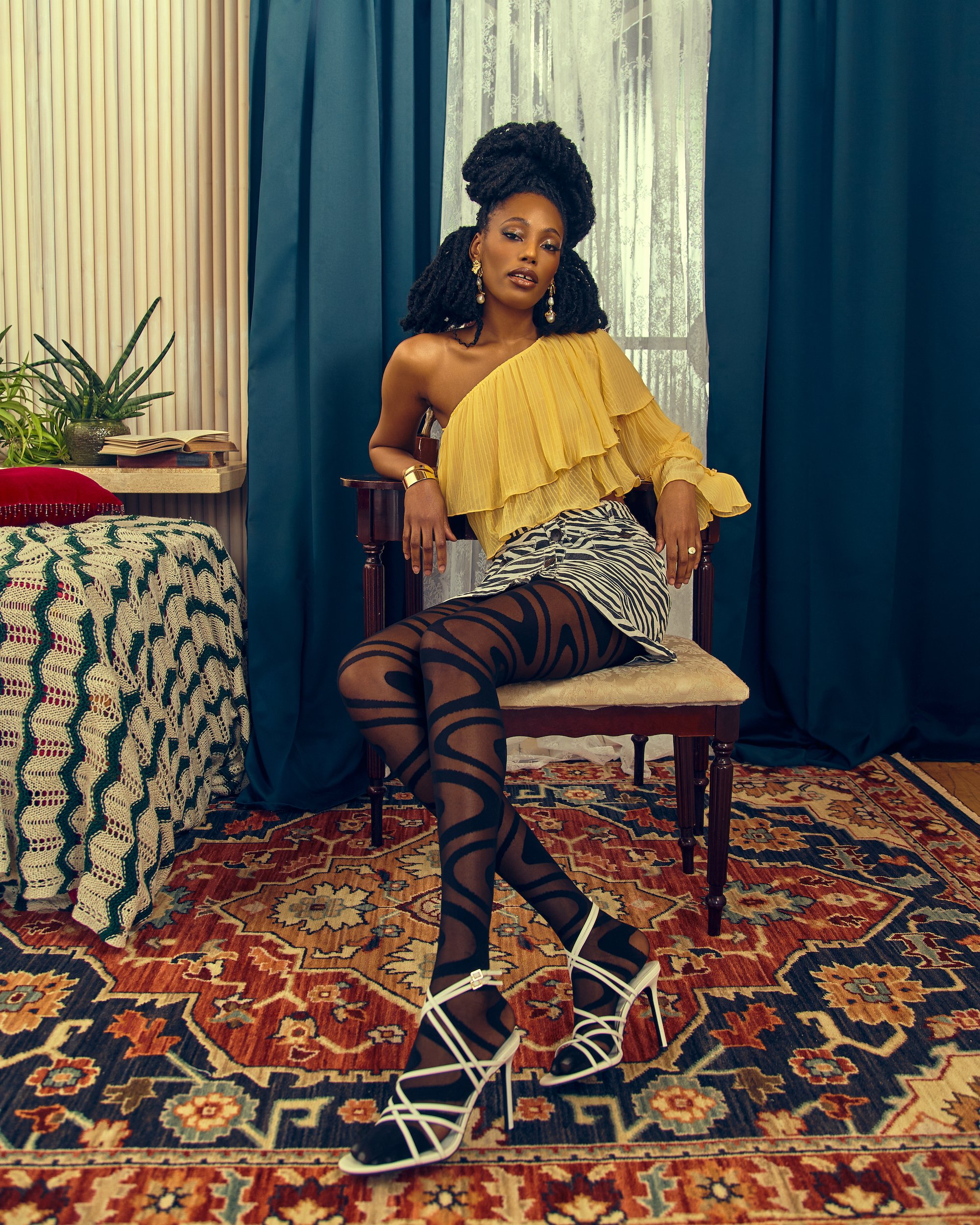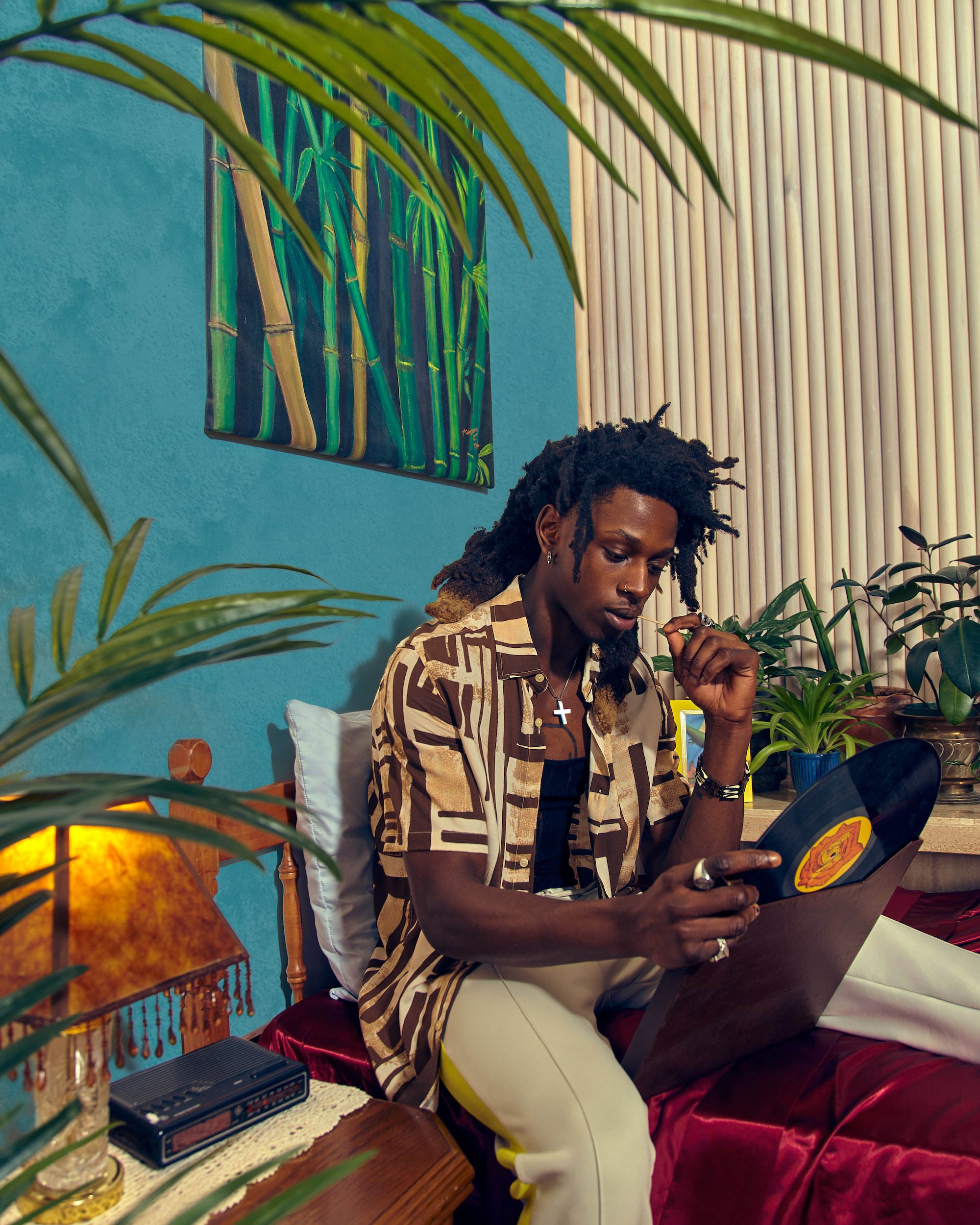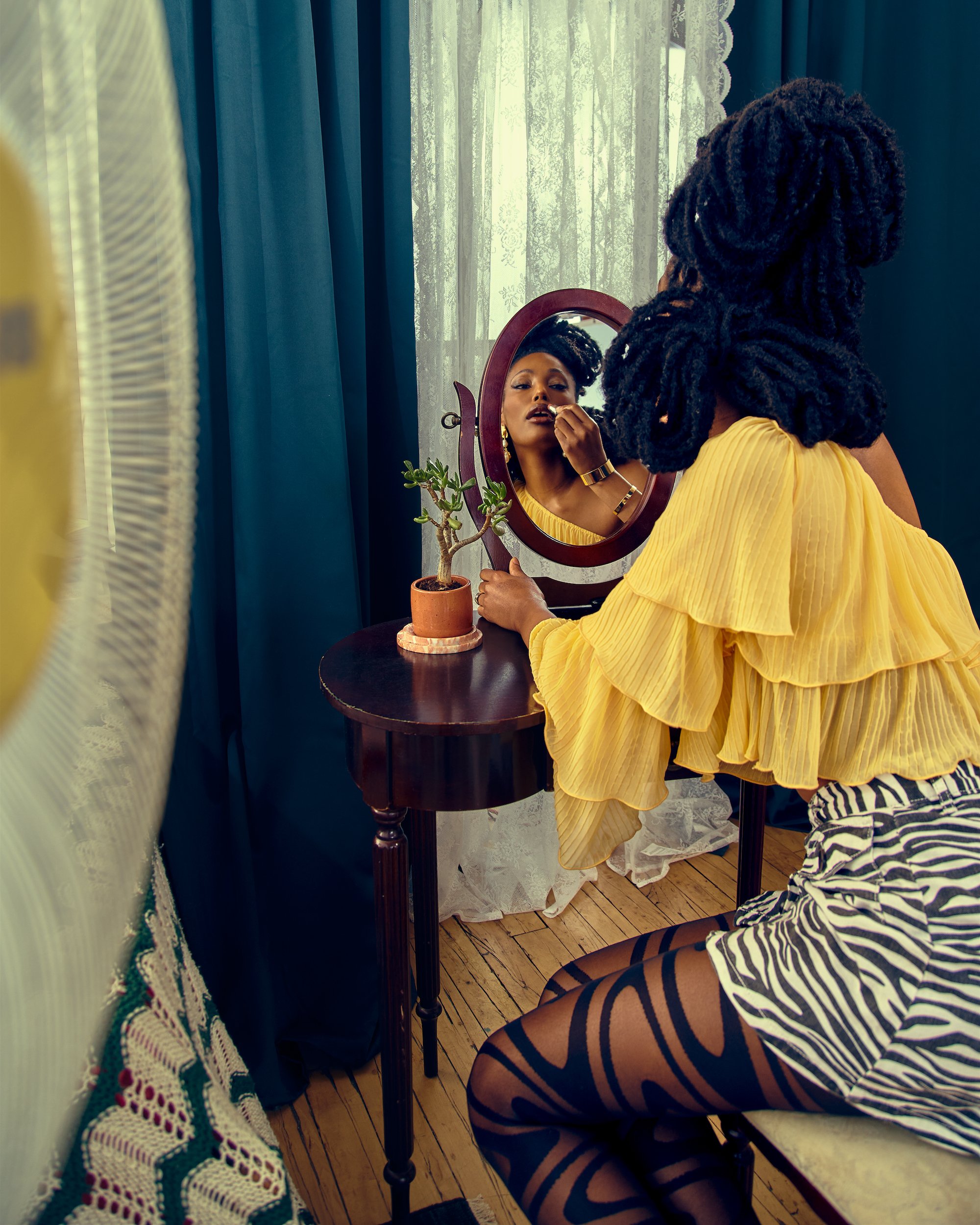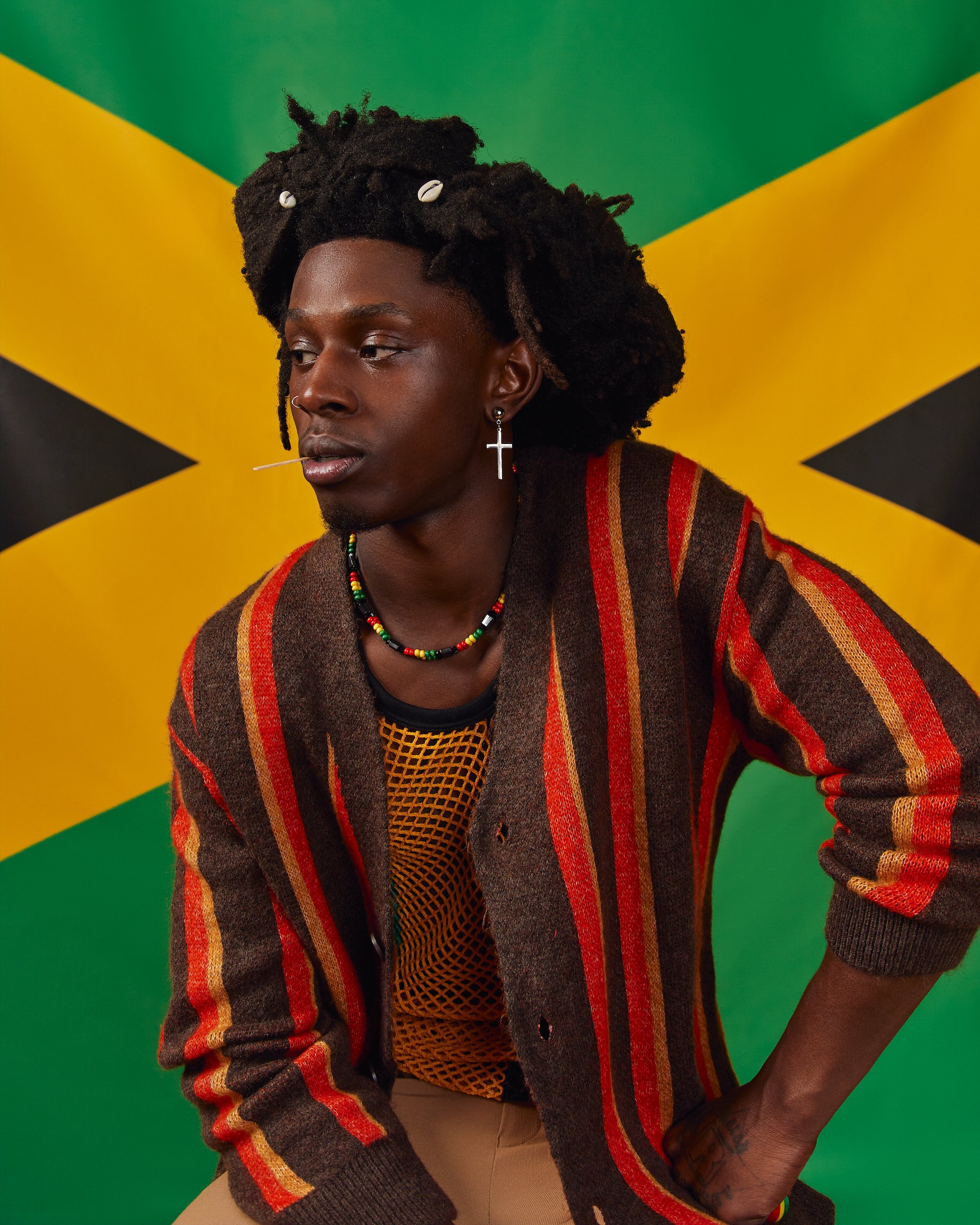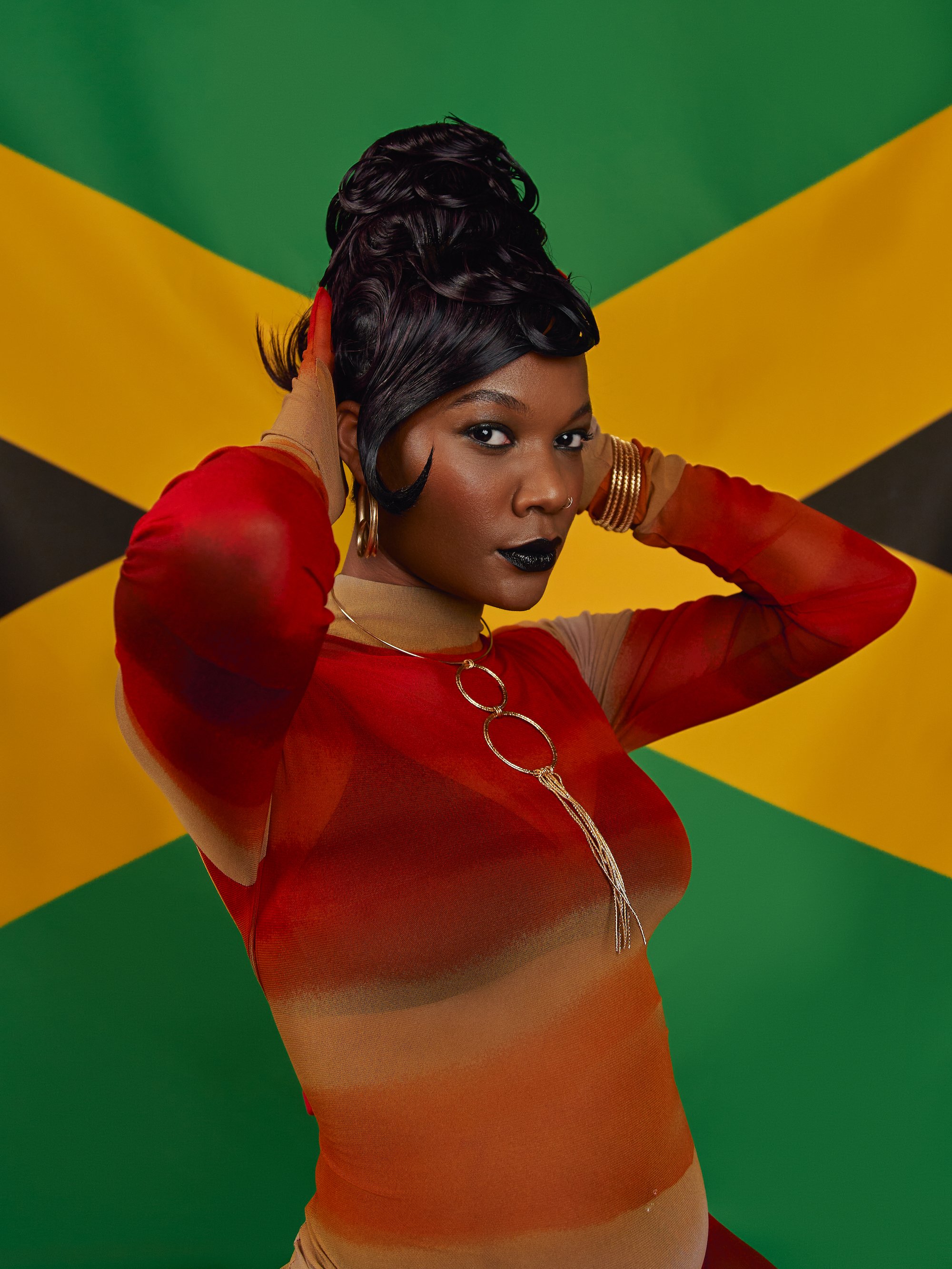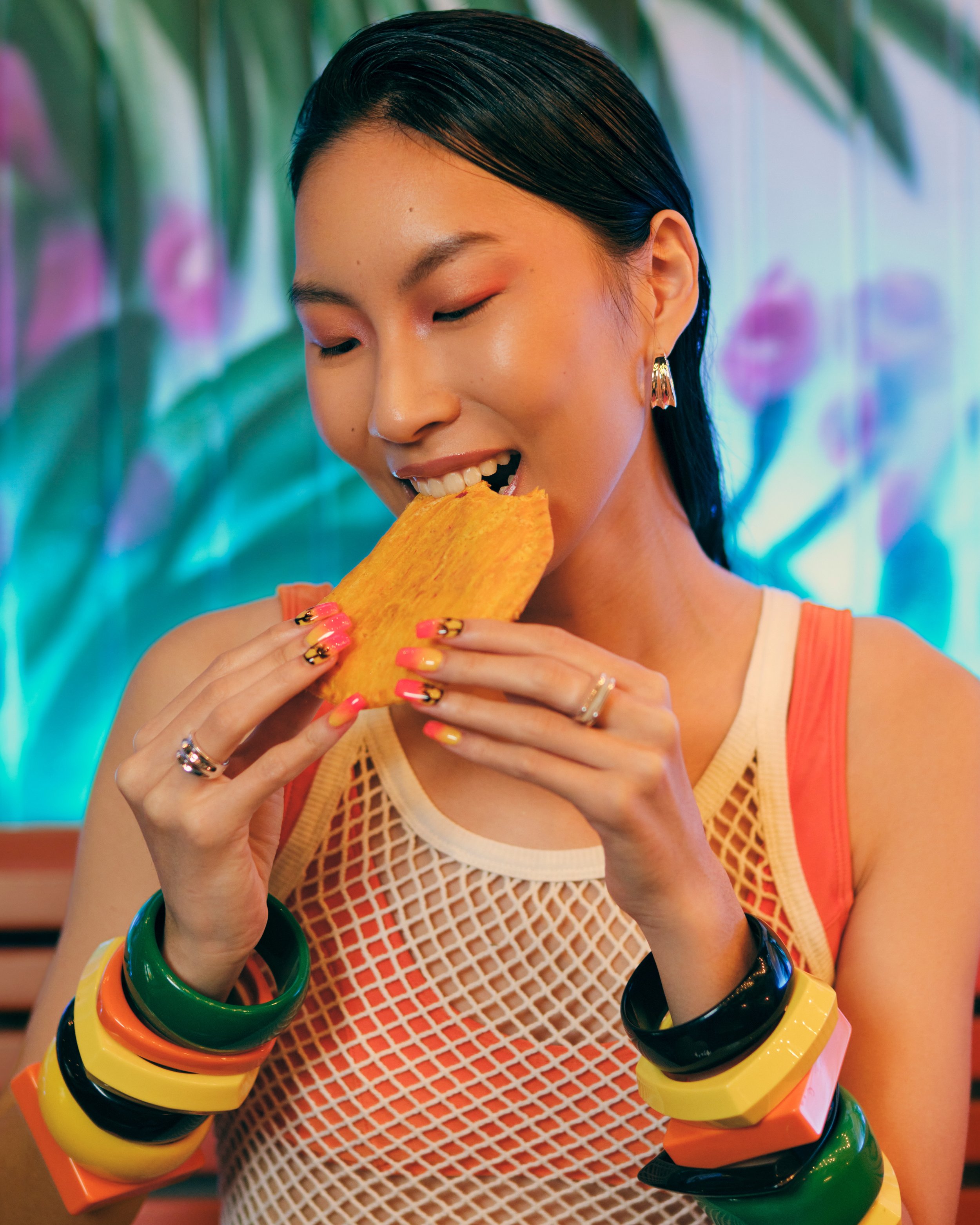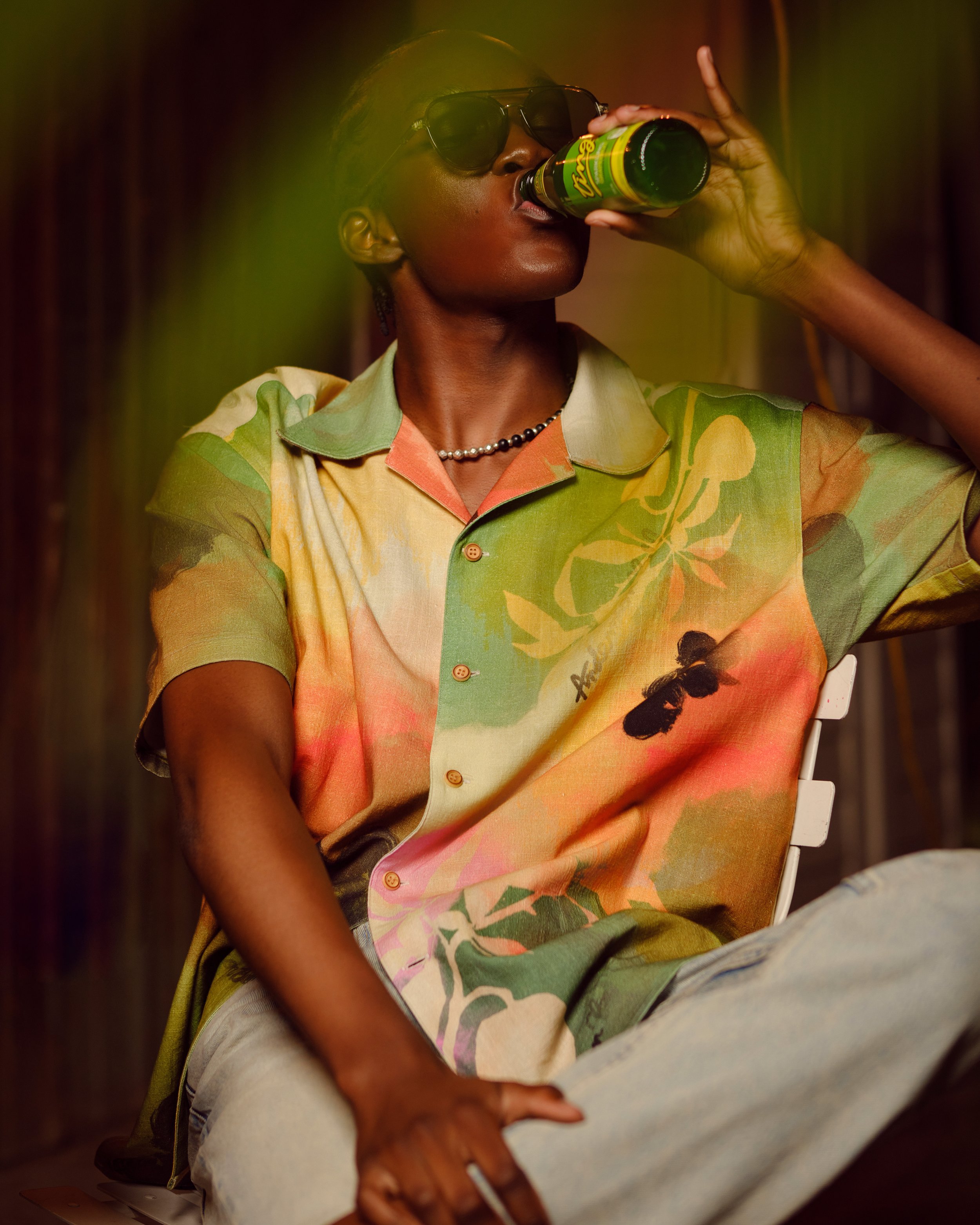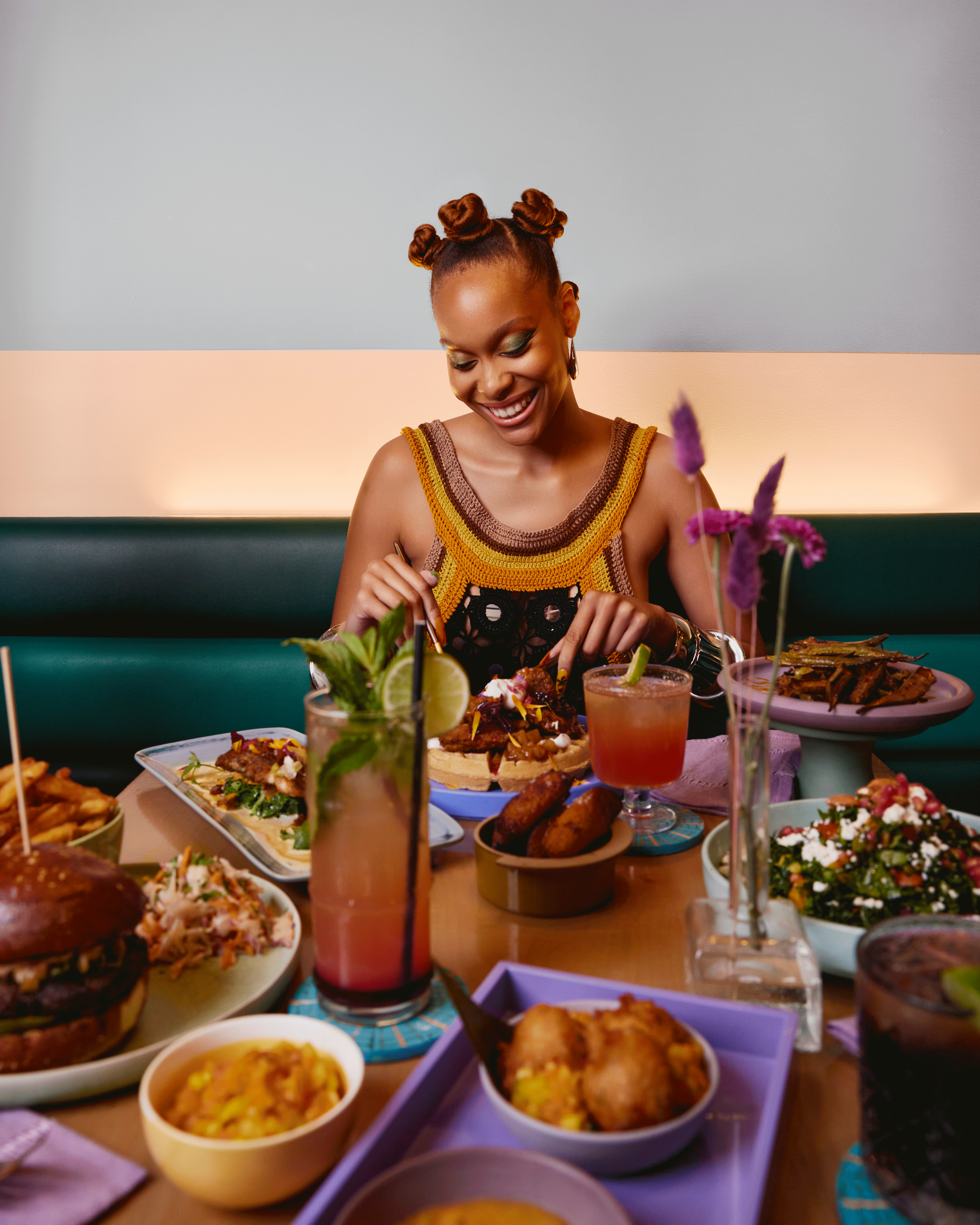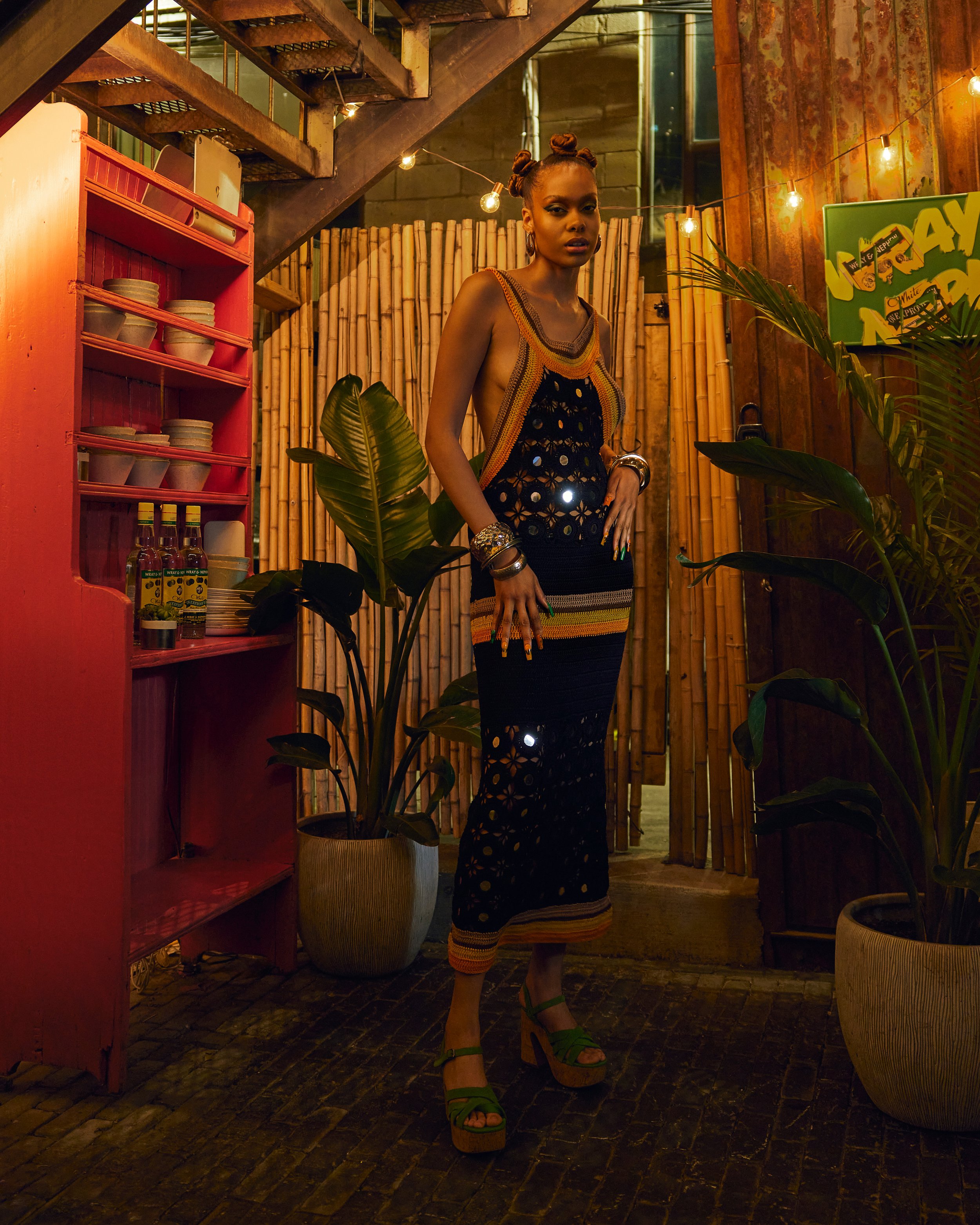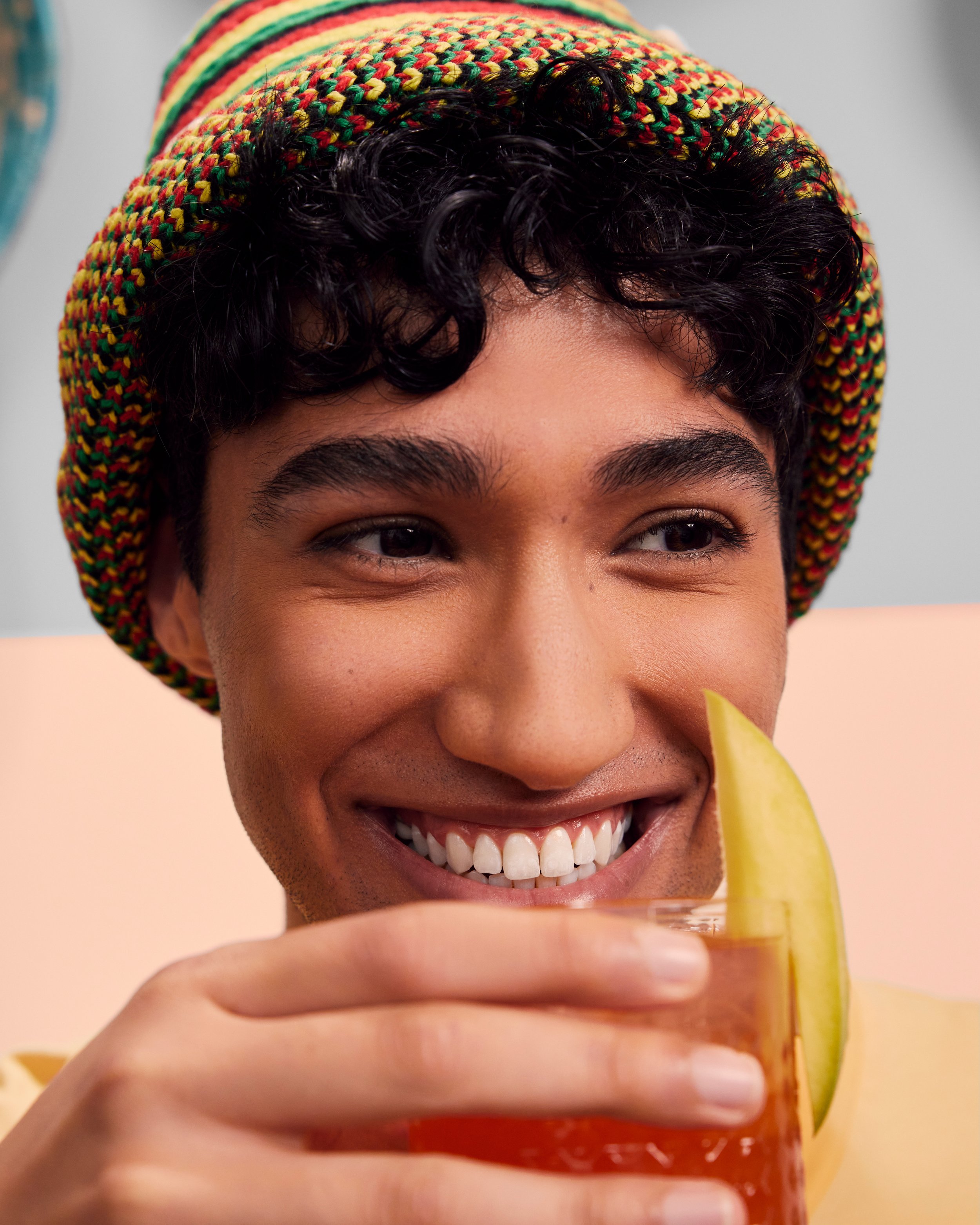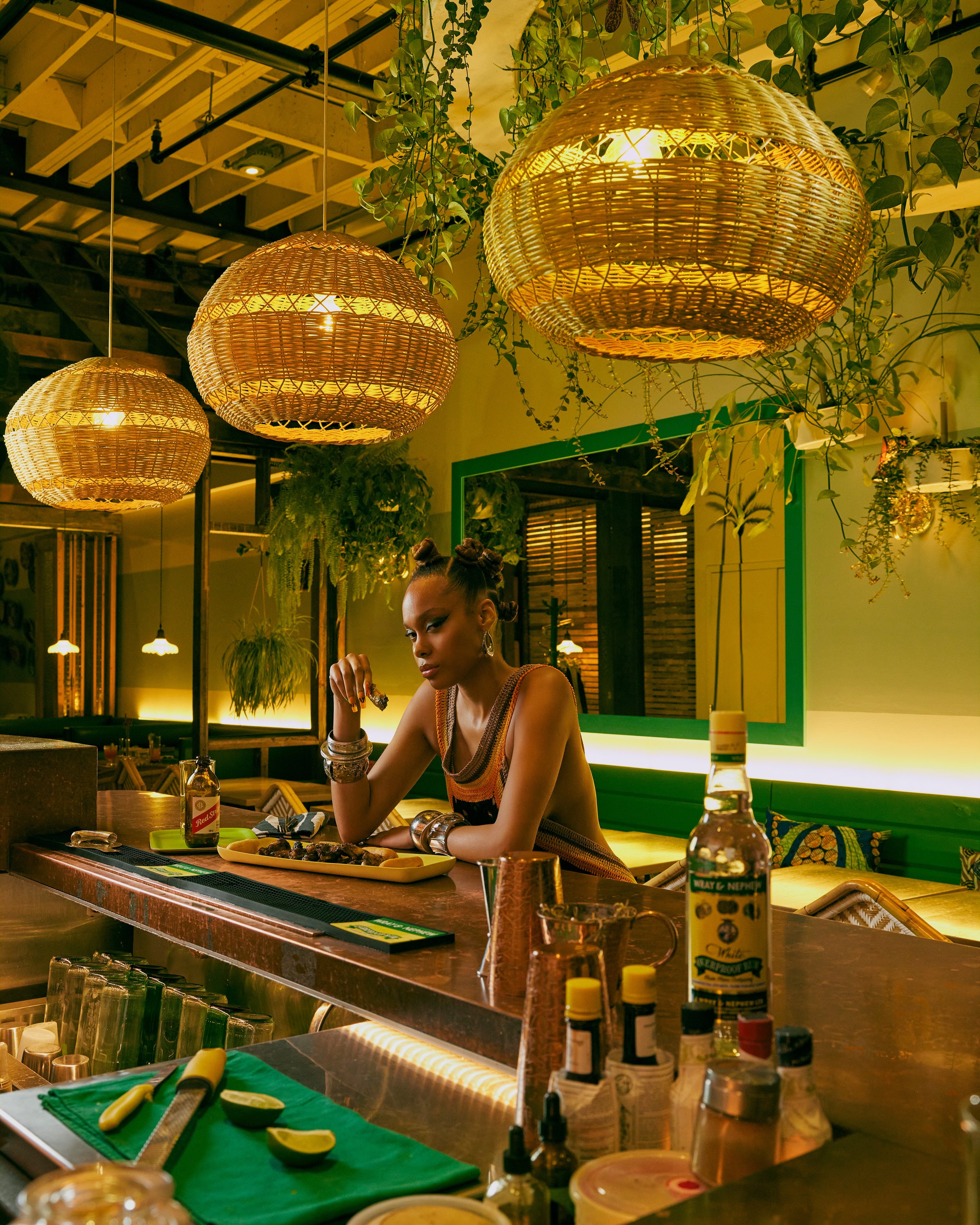Reclaiming Caribbean Identity: A Conversation with Toronto-Based Photographer O’shane Howard
O’shane Howard, YAAD, 2023
Last summer, I cried in front of my mother for the first time as an adult. We sat across from each other at the kitchen table in my Toronto apartment—an album of photos scattered on the table space between us. This album she had gifted to me as a child during one of my routine summer trips to visit her in Jamaica. I was nine when I first received the album from her, and now I am 28 years old and sharing, amidst tears, what the album meant to me after nearly two decades. The album was a collection of photo memories from my childhood in Jamaica: a baby version of myself sitting upright on a bed; a 12-year-old me biting into a Tastee patty; photos of my grandmother dressed for church; a 14-year-old me at the Norman Manley Airport awaiting my flight back to Canada. I cried in front of my mother because I just now recognized the value of these photos. Not only did they capture my growth over the years; they also—unbeknownst to me—preserved my connection to yaad. Each photo was a reminder that though I now live in Canada and have gained citizenship here, I also belong elsewhere—that is, Jamaica. My mother’s ability to preserve my connection to Jamaica through her photo-taking has created for me a memory book that is so incredibly special and unique. In many ways, her practice of photo-taking reminds me of Toronto-based photographer O’shane Howard, whose work centres and preserves Black and Caribbean communities living in Canada.
In his work, Howard blends elements of photojournalism with portraiture to produce elegant and captivating images that tell stories that speak to the lived realities of Black and Caribbean communities in this country. His contributions are a reminder of the continued importance of visual representation and the power of photography to give voice to those who have been historically silenced or unseen. Howard's work is a call to action, reminding us that representation matters. It serves as a vital platform to showcase the varied faces, experiences and backgrounds within Canada’s diverse Black and Caribbean communities.
I had an opportunity to chat with Howard about his work and who he is outside of photography. Excerpts from our discussion are below.
Andre Harriott: Can you introduce yourself to us outside of what you do?
O’shane Howard: That's a good question. I would introduce myself as someone that is family-oriented, puts their faith at the forefront, and an all-around, calm, collected guy.
AH: Where in Jamaica is your family from?
OH: I'm Canadian-born. My mom was born in Spanish Town, Jamaica, and my dad was born in Kingston, Jamaica.
AH: What did Caribbean representation look like when you were growing up? Did you see it at all? Is it different today?
OH: I think Caribbean identity, for me, didn't really hit until middle school, to be honest. That's when I started living with my grandmother. So having her around me now for over 20 years, she still has the roots and all that stuff embedded in her. Plus, my parents really did paint this picture of what it means to be Caribbean and what it means to be a part of the Jamaican diaspora. I didn't really start owning that until middle school when I was speaking a little bit of patois here and there. I also grew up in Brampton and Malton. During that time in Brampton, many of my friends were multicultural, but I primarily had a lot of white friends. So for me, there wasn't really that cultural aspect growing up because you’re obviously spending more time with your friends than your parents during the weekdays, right? So it was not until I was more immersed around my grandmother and eventually moved to Malton––where it's predominantly Black people, Caribbean people, Africans and whatnot––that I started to get more in tune with my heritage and be more informed about why things are done in this way or why we listen to what we listen to. Now, being 31, it's embedded in me. I can definitely see that when I made the shift from Brampton to Malton, that's when I really started owning my identity, my Jamaican side.
AH: How has your understanding of what it means to be Jamaican changed from when you were younger until now?
OH: It has definitely developed. Growing up, I always thought Jamaicans were only Black people until I got older, started educating myself, and realized how ignorant I was. I'm like, yo, there are white Jamaicans. There are Indo-Jamaicans. When someone asks you, “What does a Jamaican look like?” You can't necessarily describe how they look because we're “out of many, one people,” right? So that was a big factor for me––realizing that my mom's mom is actually Indo-Jamaican. My grandmother's grandmother was Indo-Jamaican, too, and my grandmother looked Jamaican-Chinese because her dad's dad was Chinese. So it's really learning about what it means that our motto is “out of many, one people.” And I'm still educating myself on these things, even as an adult.
AH: You took a media class in high school and studied media and fashion in college. What attracted you to the arts?
OH: Growing up, I was really into art, and as a kid, I was always making arts and crafts and whatnot. And then I was super into Art Attack, like throwback stuff. But all that kind of vanished when I hit puberty with sports and all that stuff. I was heavily into sports, and then that kind of died down in high school, so I didn't really have an identity in high school. I was kind of floating. But I guess that spark came back when I was trying to find and develop myself as a young man. When I was thinking, maybe I want to be a lawyer, or maybe I want to do IT, I looked at that media program like, Oh, there are various things, and I can dabble and see which one I like. But even in college, photography wasn’t the main thing. I wanted to become a video editor, and that was mainly because I really liked my video teacher. Whereas my photography professor was mad boring, straight textbook, so it didn't really interest me. But I was like, “You know what? Let me make use of this,” and I guess it really sparked that kid in me. Honestly, it was just a God-given gift for me to become a photographer because it was not a goal. Prior to that, I didn't know any photographers; I didn't know that was even a career. You hear about becoming like a police officer, firefighter, nurse, all that stuff, but there was never an option like “Oh, you could become a photographer and actually do this for a living,” you know, like a commercial photographer shooting for all these brands that you see on billboards.
O’shane Howard, YAAD, 2023
AH: I want to talk a little bit about YAAD. What was your intention for that project?
OH: When I look at my body of work, I've obviously highlighted other cultures—which I love doing, and I'll still continue to do that—but at the same time, I felt the missing piece to my portfolio was adding my heritage to it. Also, just seeing how Jamaican people are sometimes highlighted through photography or media in general, it's not really something I want to see personally. I want to create stuff that I personally want to see and enjoy and really uplift and educate other people who may not be from Jamaica. So that's essentially how I approached YAAD. It wasn’t like a mission; it was more so a feeling that I wanted to give. I feel like even though our parents may be from Jamaica, they always embed that atmosphere in their house in Canada. There's a specific way that Jamaicans do stuff in their homes that is unexplainable. You just have to be a part of it and see it for yourself. So that's the feeling that I wanted to give based upon my own experiences and other experiences that I know my friends and peers have had. All of the detailed pieces in the imagery were very calculated. And, of course, there are numerous things you could add because there are so many things embedded in our culture, but I just wanted to include stuff that was really familiar and nostalgic that people from all different age groups could relate to.
AH: How do people respond to your work?
OH: What I get a lot from people is that I incorporate a lot of culture into it. And not just like culture being photographed in an editorial way, but more so culture being embedded even in my commercial work. It's not really something that people are used to seeing, but when they see it, they are really happy to see it. They think it brings another layer to advertising products, whether it might be a sneaker, pants, a t-shirt or even lifestyle. They feel like culture is another element to really draw in the people, you know, versus just selling something and telling people, “This is what it does, and this is how I'll make you look.”
AH: What was your experience working on Jump Ball?
OH: Oh, that was a fun one. That was my biggest project at that time. That was also an educational experience for me because I didn't know much about Ghana, Senegal or Ethiopia. I didn't know much about their heritage and their cultures, so as much as I was shooting it, it was a learning experience for me as well. I also knew the photos were hard, but I didn't know they would blow up like that. To this day, it's still circulating—four years later.
AH: What was it like participating in the Feels Like Home panel?
OH: It was more so about seeing how interested people were in hearing what we had to say. Yeah, the work is beautiful, they are there for the work, but it brings a different feeling to see the people who connect with you on Instagram in real time. It goes to show that they really love and support what we do as artists because you could spend a Saturday doing something else versus coming to the panel. So that's how I was looking at it—seeing people enjoy it in real time outside of the four corners of Instagram added a new feel.
AH: How do you sit with your work?
OH: I'm learning how to marinate myself in the moment, not thinking about what's next, because I feel like, as artists, we always want to think about what's next. In life, you graduate, you get married, you get the house, and there's always that next feeling versus marinating in this current feeling. So I'm just marinating in things right now. I'm just trying to take things slow versus trying to always one-up the last thing I did.
O’shane Howard, YAAD, 2023
AH: Have you ever doubted your work?
OH: Praise and Worship was that project. I sat on that project for eight months. I hated it. Long story short, we lost a lot of time on that shoot. The whole shoot was rushed, and there was one more fit and certain shots that I wanted to get. When I looked at those photos, I was like, “I hate all of this. I am not even going to look at this,” and I didn't look at it for eight months. I had no intention of ever putting it out like that. Then one day, I looked at it again with fresh eyes, and I said, “These are hard still.” Sometimes you just have to look at things with fresh eyes. When we're looking at something, we might not like it right away, but as we give time to it, it might grow on us. That's what happened to me. I was doubting it. I didn't like it. I didn't think it was worthy of being put out. Going back to my response earlier, I was always trying to one-up the last project, so there was also that pressure, but I'm glad that I did put it out there. I would definitely tell somebody: don't marinate on how you feel now. Just look at the work later. We all doubt ourselves as artists because we're always one way or another, maybe comparing ourselves to what we last did or comparing ourselves to somebody else's career. You can't compare your two years in the game to somebody’s twenty years in the game. You have to know where you're at. You have to know what season you're in. Are you in a season of planting seeds? Are you in the season of watering, or are you in a season of flourishing? So just have patience. It does take time, and things will come together.
AH: Who influences your work? And who has made space for you to do what you do now?
OH: I pull from different places, whether it's a music video, a movie or a conversation. I also look at what I did in the past, such as Jump Ball, and I just build on top of that. I'm like, Okay, I like what I did here. This is the world that I want to stay in, but how can I build on top of that? So leading up to today, I’ve enjoyed learning about and educating on the diversity of Black cultures through my photography. I always try to stay in that lane because I'm a very passionate person when I care about things, and it needs to feel really heartfelt. So that's the lane that I always try to stay in for myself. I know it's not easy to tell stories through photography—ensuring that each frame you're looking at doesn't feel redundant. There is a lot of thought I put into that to really tell a story frame by frame, so there are not a lot of photographers that I could say I pull from. I don't think I can even name one, to be honest. And it's not to say there aren't any; I just don't watch photography like that.
AH: Since you picked up your first camera until now, how would you say you have changed as an artist?
OH: When I look back, I realize that I was not organized. My ideas were not organized; the way I did things was not organized. You know, learning how to hold things properly, learning how to ask certain questions. I wasn't asking the right questions back then versus now. I've also learned a lot about the business side and the commercial side of this photography business. Back then, I didn't have the knowledge or the support. I was just reading off of Google and trying to find as much stuff as possible, and people can tell when you don't know what you're doing. So I would say O’shane back in 2016 versus O’shane in 2023 is a 180 for sure.
O’shane Howard, YAAD, 2023
AH: What are you working on now?
OH: I'm in the works of shooting another Jamaican diaspora series. It's a spinoff from YAAD. This one is called NYAM. It’s more focused on the food aspect. Everybody, whether you're Caribbean or not, enjoys Jamaican food. Toronto is a melting pot of different cultures, but guaranteed everybody knows jerk chicken. I see all these other foods being done in advertising, but I've never seen West Indian food—Jamaican food––being done in advertising, so I'm going to highlight it in that commercial, editorial way. Going back to what I said about Jamaica's motto, “out of many, one people,” I’ll also have Indo-Jamaicans and Chinese Jamaicans alongside Black Jamaicans to showcase the diversity of Jamaica and the beauty of the Jamaican food we all love.
Following my conversation with O’shane, the NYAM exhibit launched at Chubby’s Jamaican Kitchen in downtown Toronto. The exhibit is curated by Ashley McKenzie-Barnes, in collaboration with Wray and Nephew Canada, and is open to the public from July 19th, 2023.


